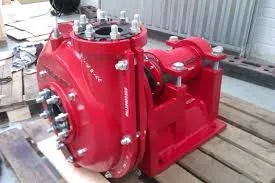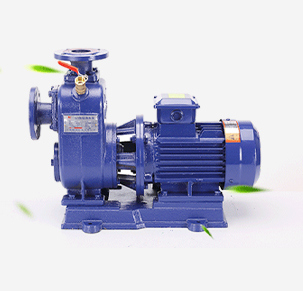TEL:
+86 13120555503
Russian
- Afrikaans
- Albanian
- Amharic
- Arabic
- Armenian
- Azerbaijani
- Basque
- Belarusian
- Bengali
- Bosnian
- Bulgarian
- Catalan
- Cebuano
- Corsican
- Croatian
- Czech
- Danish
- Dutch
- English
- Esperanto
- Estonian
- Finnish
- French
- Frisian
- Galician
- Georgian
- German
- Greek
- Gujarati
- Haitian Creole
- hausa
- hawaiian
- Hebrew
- Hindi
- Miao
- Hungarian
- Icelandic
- igbo
- Indonesian
- irish
- Italian
- Japanese
- Javanese
- Kannada
- kazakh
- Khmer
- Rwandese
- Korean
- Kurdish
- Kyrgyz
- Lao
- Latin
- Latvian
- Lithuanian
- Luxembourgish
- Macedonian
- Malgashi
- Malay
- Malayalam
- Maltese
- Maori
- Marathi
- Mongolian
- Myanmar
- Nepali
- Norwegian
- Norwegian
- Occitan
- Pashto
- Persian
- Polish
- Portuguese
- Punjabi
- Romanian
- Russian
- Samoan
- Scottish Gaelic
- Serbian
- Sesotho
- Shona
- Sindhi
- Sinhala
- Slovak
- Slovenian
- Somali
- Spanish
- Sundanese
- Swahili
- Swedish
- Tagalog
- Tajik
- Tamil
- Tatar
- Telugu
- Thai
- Turkish
- Turkmen
- Ukrainian
- Urdu
- Uighur
- Uzbek
- Vietnamese
- Welsh
- Bantu
- Yiddish
- Yoruba
- Zulu
Telephone: +86 13120555503
Email: frank@cypump.com
Янв . 31, 2025 05:58 Back to list
Vertical Slurry Pumps
Slurry pumps are a critical component in industries that deal with solids in suspension, including mining, metallurgy, chemical processing, and wastewater management. Their primary function is to transport abrasive slurry through pipelines, and when engineered correctly, they can greatly improve operational efficiency. This article delves into the intricacies of slurry pumps and highlights the expertise involved in engineering these highly specialized devices, ultimately emphasizing why trust in the right engineering team is paramount.
Trustworthiness in slurry pump engineering is not just about delivering a functional product. It extends to post-installation support, predictive maintenance planning, and life-cycle monitoring. By providing detailed maintenance guidelines and training, engineers ensure the pump’s optimal performance over its expected lifespan. Furthermore, trustworthy engineers offer transparent communication about the capabilities and limitations of their pump designs, fostering informed decision-making by industry stakeholders. The collaboration between engineers and end-users also plays a vital role in developing slurry pump solutions. Engineers proficient in client communication can effectively interpret user feedback to refine and customize designs that better fit unique operational demands. This collaborative effort is the cornerstone of innovation in slurry pump technology, continuously pushing the boundaries of durability and efficiency. One notable example in the industry is the development of a dual-phase stainless steel slurry pump, which provided enhanced corrosion resistance and strength. Implemented by an experienced team of engineers for a large chemical processing facility, this innovation improved uptime and reduced maintenance costs significantly, showcasing the product of expertise and reliability in slurry pump engineering. In conclusion, engineering slurry pumps is a confluence of specialized knowledge, proven experience, authoritative project history, and trustworthy practices. For industries reliant on slurry transportation, selecting the right engineering partner ensures that pump solutions are not only effective but also sustainable and cost-efficient. Leveraging cutting-edge technology and continued innovation, these engineers provide robust solutions that address the most demanding challenges in slurry transport, enabling industries to optimize their operations and resources.


Trustworthiness in slurry pump engineering is not just about delivering a functional product. It extends to post-installation support, predictive maintenance planning, and life-cycle monitoring. By providing detailed maintenance guidelines and training, engineers ensure the pump’s optimal performance over its expected lifespan. Furthermore, trustworthy engineers offer transparent communication about the capabilities and limitations of their pump designs, fostering informed decision-making by industry stakeholders. The collaboration between engineers and end-users also plays a vital role in developing slurry pump solutions. Engineers proficient in client communication can effectively interpret user feedback to refine and customize designs that better fit unique operational demands. This collaborative effort is the cornerstone of innovation in slurry pump technology, continuously pushing the boundaries of durability and efficiency. One notable example in the industry is the development of a dual-phase stainless steel slurry pump, which provided enhanced corrosion resistance and strength. Implemented by an experienced team of engineers for a large chemical processing facility, this innovation improved uptime and reduced maintenance costs significantly, showcasing the product of expertise and reliability in slurry pump engineering. In conclusion, engineering slurry pumps is a confluence of specialized knowledge, proven experience, authoritative project history, and trustworthy practices. For industries reliant on slurry transportation, selecting the right engineering partner ensures that pump solutions are not only effective but also sustainable and cost-efficient. Leveraging cutting-edge technology and continued innovation, these engineers provide robust solutions that address the most demanding challenges in slurry transport, enabling industries to optimize their operations and resources.
Share
Next:
Latest news
-
ISG Series Vertical Pipeline Pump-Chi Yuan Pumps|Industrial Fluid Handling,High Efficiency
NewsAug.11,2025
-
ISG Series Vertical Pipeline Pump - Chi Yuan Pumps | High Efficiency&Energy Conservation
NewsAug.11,2025
-
ISG Series Vertical Pipeline Pump - Chi Yuan Pumps Co., LTD.|Advanced Fluid Handling, Energy Efficiency
NewsAug.10,2025
-
ISG Series Vertical Pipeline Pump - Chi Yuan Pumps | High Efficiency, Low Noise, Stable Performance
NewsAug.10,2025
-
Efficient Self Priming Sewage Pumps for Heavy Duty Use
NewsAug.10,2025
-
pipeline pump - Chi Yuan Pumps Co., LTD. | High Efficiency, Energy Saving
NewsAug.10,2025










